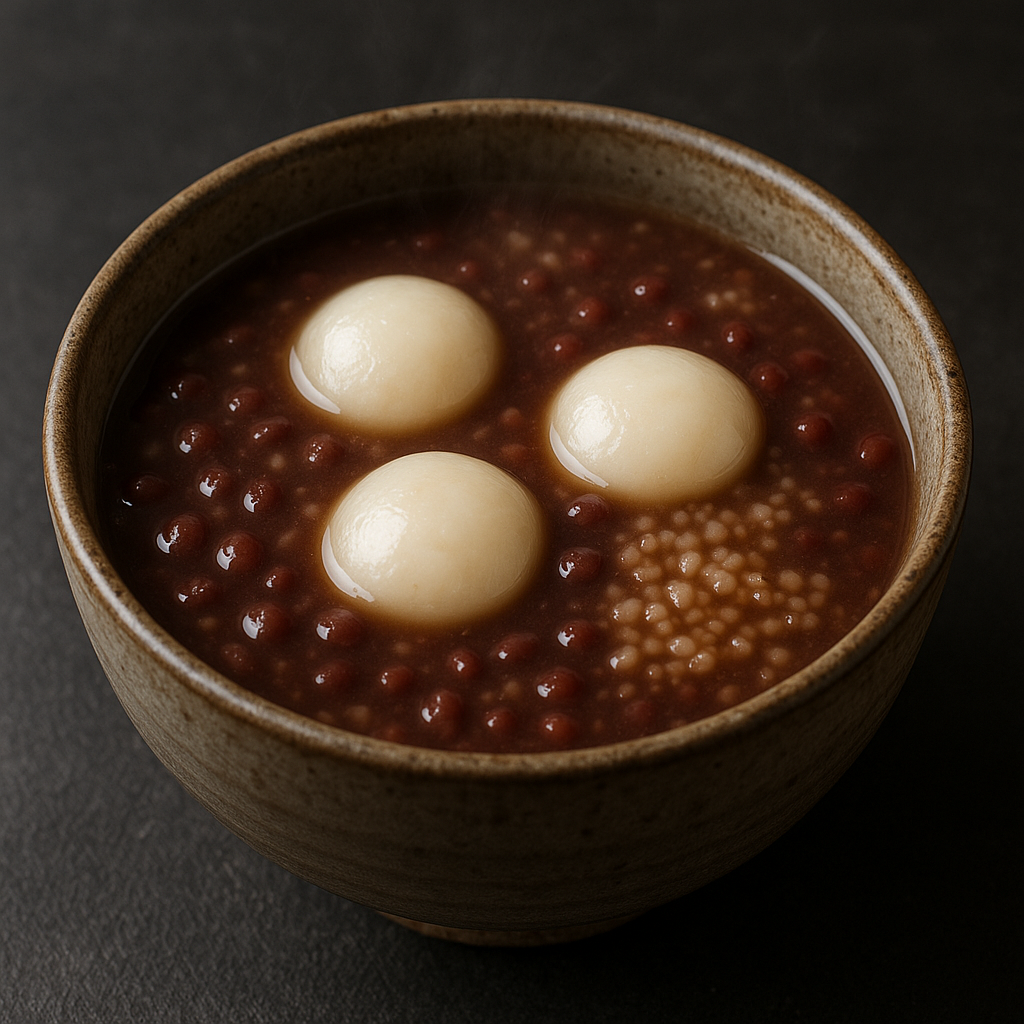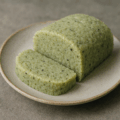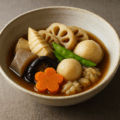果報だんご(岩手)の特徴
“果報=良い巡り合わせ”を願う行事のもち菓子
果報だんごは、幸福や良縁を祈って作られる岩手の素朴な甘味です。米粉やもち粉を練って丸め、ゆで上げてから、きなこ・黒蜜・あんこ・くるみだれなどでいただきます。節供や祝いの席でふるまわれ、もっちりした食感とやさしい甘さが親しまれています。
家庭ごとに配合や仕上げが多彩
上新粉・もち粉(または白玉粉)の割合や加水は家ごとに異なります。形は丸形や小判形などさまざまで、仕上げは定番のきなこ・あんこに加え、東北らしいくるみだれやずんだも好まれます。
果報だんご(岩手) レシピ
材料(5人分)
- 上新粉 120g
- もち粉 80g(または白玉粉 80g)
- 砂糖 20〜30g(生地用・好みで)
- 水 170〜210ml(生地の固さで加減)
- 茹でた米…適量
- 小豆あん 適量
作り方
- 上新粉・もち粉・砂糖を混ぜる。
- 水を少しずつ加えてこね、耳たぶ程度に調整。
- 一口大に丸める(小判形も可)。布巾をかけて休ませる。
- 沸騰湯でゆでる。浮いてから1〜2分。冷水に取り、水気を切る。
- 器に盛り、小豆あんを仕上げにかける。
シェフのワンポイントアドバイス
- 加水は少しずつ行うと失敗しにくいです。柔らかすぎたら上新粉、固ければ水で調整します。
栄養価(1人分の目安)
- エネルギー:190〜260 kcal
- たんぱく質:3〜6 g
- 脂質:1〜5 g(くるみだれ使用時は増えます)
- 炭水化物:38〜52 g
- 食物繊維・ミネラル:きなこ・ずんだ・くるみ由来
歴史
“果報団子”のしつらえと伝承
一部地域では、萩の小枝を“果報”に見立てたいくつかの団子に木片を忍ばせ、萩の木で作った杖と箸とともに神棚に供える風習があります。木片入りの団子に当たると果報を授かると信じられ、その団子を供えると翌朝にお金へ変わるという言い伝えがあり、子どもにとって楽しみな行事料理でした。
名に込めた願いと行事食としての広がり
「果報」は福や良い報いを意味する語として伝わり、家庭行事や祝いの甘味として作られてきました。手近な粉ものと豆・木の実を活かす知恵が受け継がれ、現在も素朴で温かな味わいが親しまれています。
English Version
Features of Kaho Dango (Iwate)
A festive dumpling wishing for “good fortune”
Kaho dango is a simple sweet from Iwate prepared to pray for happiness and good matches. Dough made from rice flours is shaped and boiled, then served with toppings such as sweet red bean paste, kinako, or brown sugar syrup. It is enjoyed at seasonal festivals and celebrations for its chewy texture and gentle sweetness.
Household variations in ratios and finish
The proportions of joshinko and mochiko (or shiratamako), the amount of water, and shapes (round or oval) vary by household. Finishes range from anko to kinako or regional nut/bean sauces like walnut or zunda.
Kaho Dango (Iwate) – Recipe
Ingredients (Serves 5)
- Joshinko (non-glutinous rice flour) 120 g
- Mochiko or shiratamako 80 g
- Sugar 20–30 g
- Water 170–210 ml
- Sweet red bean paste (anko) as needed
Directions
- Mix joshinko, mochiko (or shiratamako), and sugar.
- Add water gradually; knead until soft and pliable.
- Shape into bite-size balls (oval is fine); keep covered to prevent drying.
- Boil until they float, then 1–2 minutes more; chill in cold water and drain well.
- Plate and finish with anko.
Chef’s Tips
- Add water little by little. If the dough is too soft, add joshinko; if too firm, add water.
Nutrition (per serving, approx.)
- Energy: 190–260 kcal
- Protein: 3–6 g
- Fat: 1–5 g (higher if served with walnut sauce)
- Carbohydrates: 38–52 g
- Fiber & minerals: from kinako, zunda, walnuts, etc.
History
“Kaho Dango” setting and folklore
In some areas, small wooden pieces cut from hagi (bush clover) branches are hidden in a few dumplings as symbols of “kaho” (good fortune). These are offered on the household altar together with a hagi-wood cane and chopsticks. Finding a dumpling with the wooden piece was believed to bring luck, and offering it was said to turn into money by the next morning—making it a much-anticipated custom for children.
Name and spread as a festive sweet
The word “kaho” conveys blessing and auspicious return, and the dumpling became established as a home-made celebratory sweet. Using familiar flours, beans, and nuts, families have passed down its simple, warming taste to the present day.



何でも質問してください!